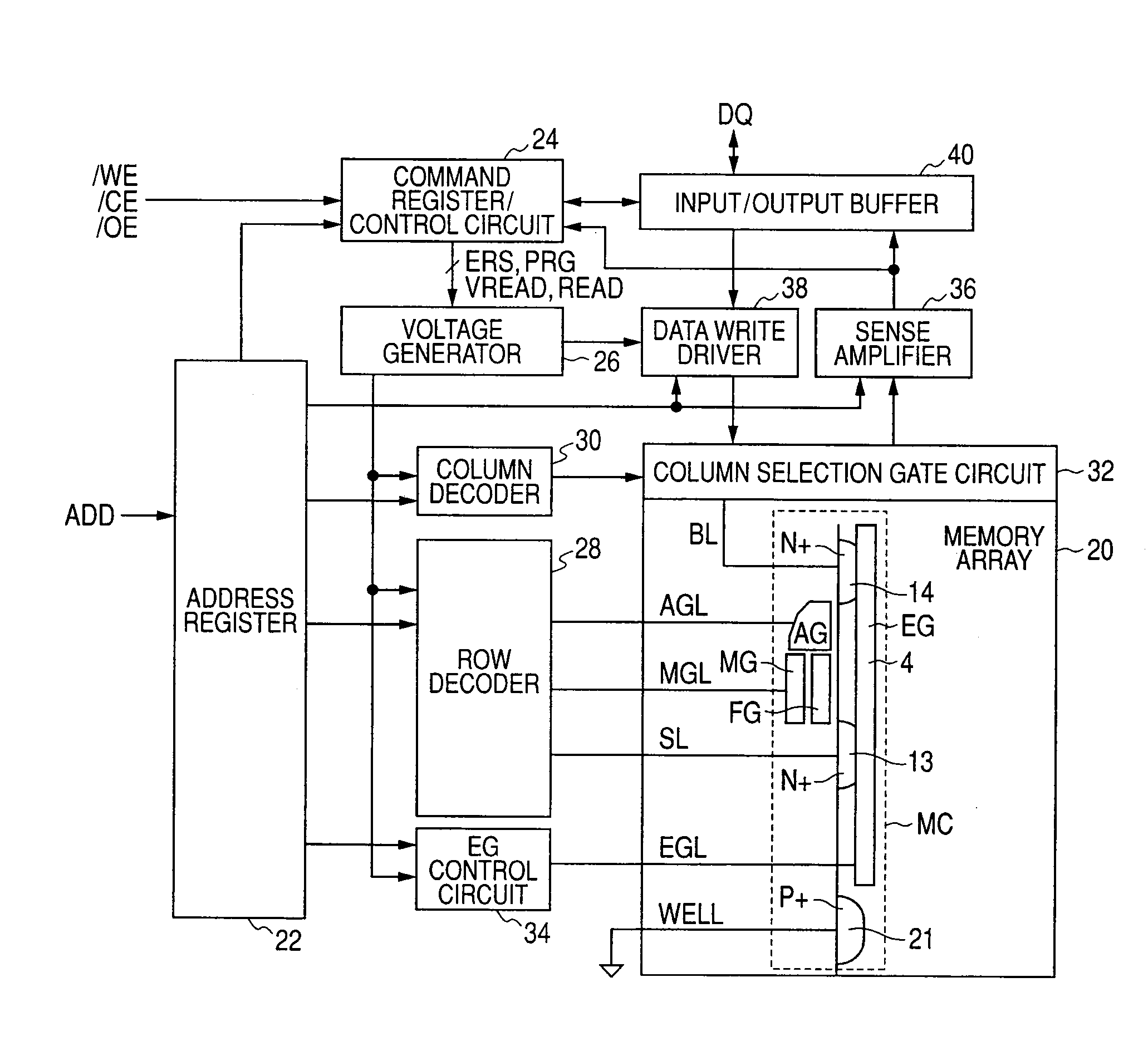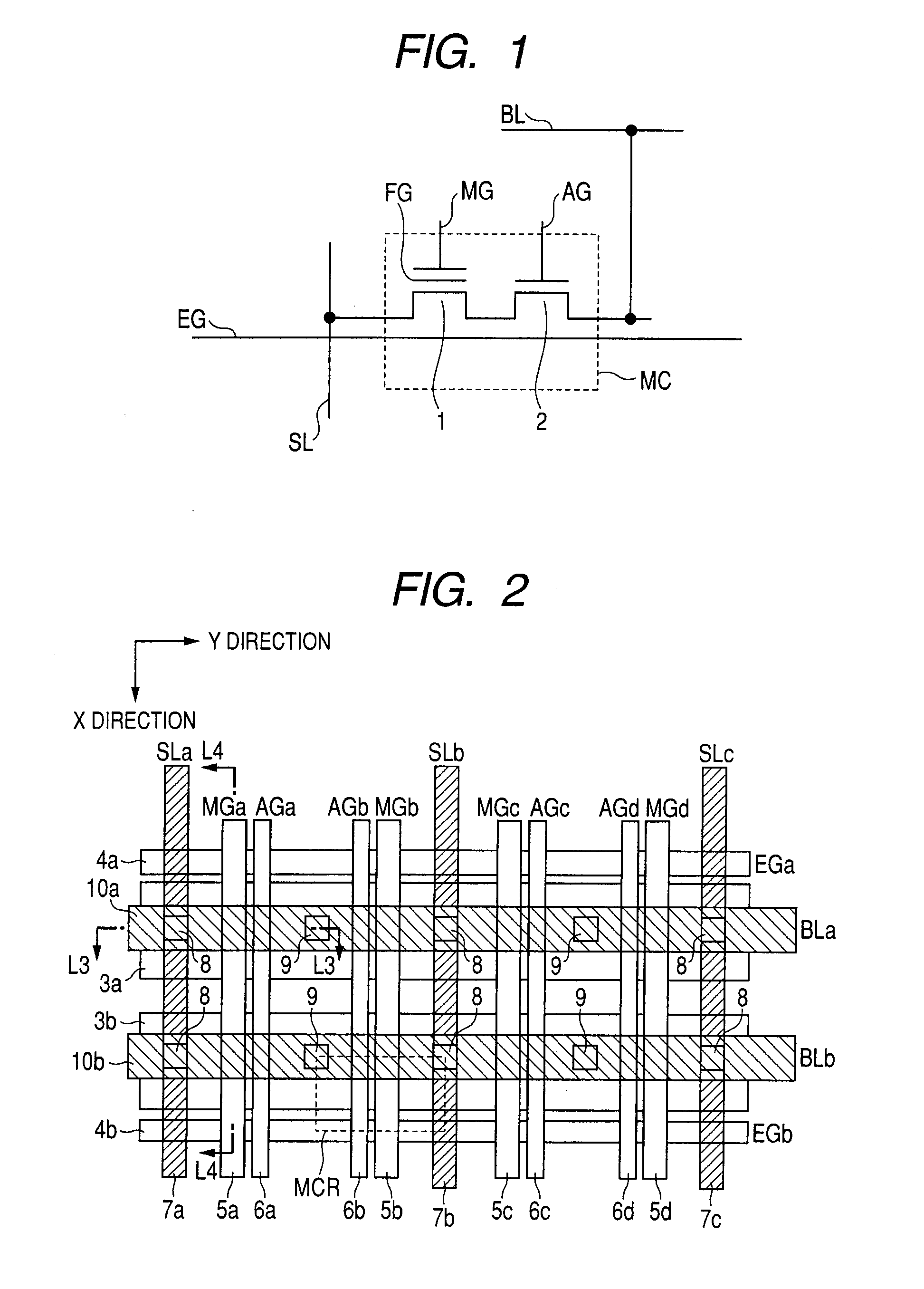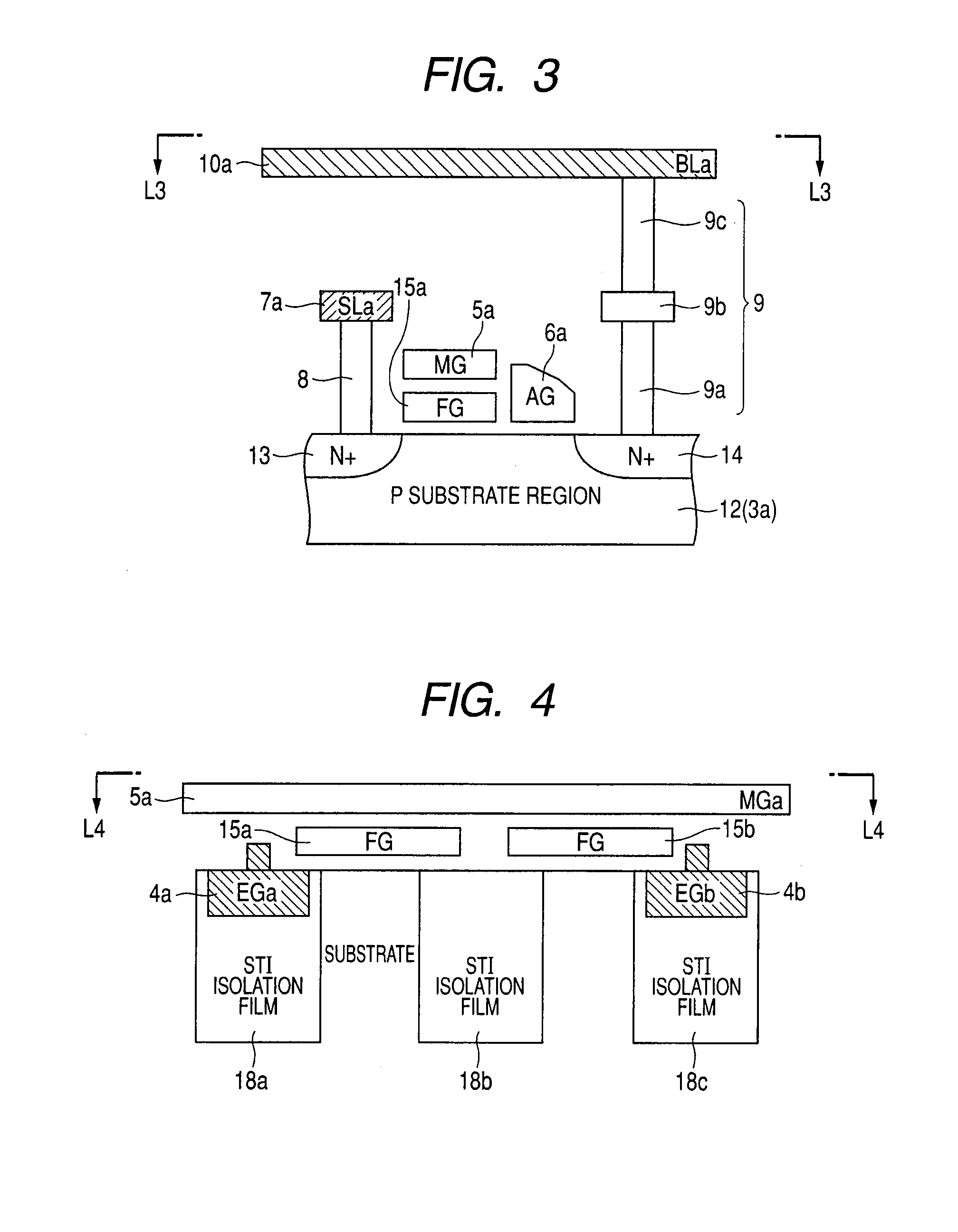Semiconductor device
a technology of semiconductor devices and semiconductors, applied in the field of semiconductor devices, can solve the problems of difficult shortening the erase time, difficult to reduce the size of memory cells, and inability to read or write data in a state in which the erase voltage is high, and achieve the effect of improving access efficiency
- Summary
- Abstract
- Description
- Claims
- Application Information
AI Technical Summary
Benefits of technology
Problems solved by technology
Method used
Image
Examples
first embodiment
[0107]FIG. 1 is a diagram schematically showing an electrical equivalent circuit of a memory cell in a semiconductor device employed in the first embodiment of the present invention. In FIG. 1, the memory cell MC includes a memory transistor 1 having a floating gate FG, and an assist gate transistor (selection transistor) 2 coupled in series with the memory transistor 1. The memory transistor 1 is of an N channel MOS transistor (insulated gate field effect transistor) having a stacked gate structure of a floating gate FG and a memory gate MG formed in its upper layer and has a source impurity region coupled to a source line SL. The assist gate transistor 2 is of an N channel MOS transistor of a single layer gate structure having an assist gate AG and has an impurity region coupled to a bit line BL. An impurity region is not formed between these assist gate transistor 2 and memory gate transistor 1.
[0108]The memory cell MC further has an erase gate EG. The erase gate EG is formed in ...
second embodiment
[0170]FIG. 14 is a diagram schematically showing an overall configuration of a semiconductor device according to a second embodiment of the present invention. The semiconductor device shown in FIG. 14 is different in configuration from the semiconductor device shown in FIG. 9 in the following points. Namely, as for a memory array 20, it is divided into a plurality of column blocks by a plurality of embedded erase gate lines EGLA and EGLB. The embedded erase gate line EGLA (EG (0)) is coupled to an embedded erase gate EG of a memory cell MCa, and the embedded erase gate line EGLB (EG (1)) is coupled to an embedded erase gate EG of a memory cell MCb. The memory cells MCa and MCb are respectively coupled to bit lines BL (0) and BL (1).
[0171]The memory array 20 has a single bank structure and is not capable of performing data access to each memory cell of another row in parallel upon data access to each memory cell of a given row (reading from or writing to the memory cell).
[0172]An EG ...
third embodiment
[0197]FIG. 20 is a diagram schematically showing voltages applied to a memory cell where erasure and reading are performed in parallel. In FIG. 20, an erase high voltage Veg (=10V) is applied to an embedded erase gate EG upon the erasure. Upon the reading, a read voltage Vag (=1.5V) is applied to an assist gate AG. Upon the reading, a read voltage (1.0V) is applied to a bit line BL. In this state, a channel 60 is formed in a substrate region surface adjacent to a drain impurity region 14 by the voltage Vag on the assist gate AG upon the reading. In this state, a parasitic capacitance C0 exists between the embedded erase gate EG and a floating agate FG. A parasitic capacitance C1 exists between the floating gate FG and the assist gate AG. A parasitic capacitance C2 exists even between the floating gate FG and the channel 60.
[0198]Upon the normal erase operation similar to the conventional one, the assist gate AG and the bit line BL are in an open state or 0V (ground voltage), and the...
PUM
 Login to View More
Login to View More Abstract
Description
Claims
Application Information
 Login to View More
Login to View More - R&D
- Intellectual Property
- Life Sciences
- Materials
- Tech Scout
- Unparalleled Data Quality
- Higher Quality Content
- 60% Fewer Hallucinations
Browse by: Latest US Patents, China's latest patents, Technical Efficacy Thesaurus, Application Domain, Technology Topic, Popular Technical Reports.
© 2025 PatSnap. All rights reserved.Legal|Privacy policy|Modern Slavery Act Transparency Statement|Sitemap|About US| Contact US: help@patsnap.com



